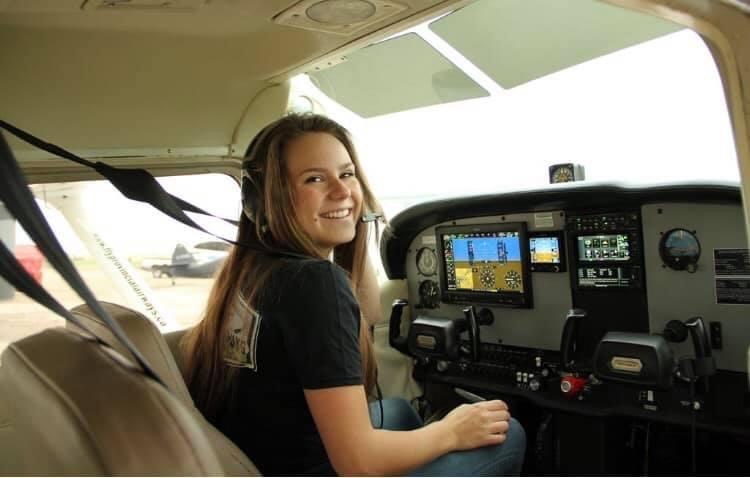Provincial Airways has expanded its flight operations to include a Transport Canada-certified Flight School as of Sept. 17. It is capable of qualifying private, recreational, and commercial pilots.
The flight school boasts a four-seat Cessna 172 Skyhawk. The Skyhawk entered production in 1955, and Cessna still makes them. With over 44,000 units, it is the world’s most-built aircraft, and has a legitimate claim to be the best flight training aircraft of all time.
Provincial Airways has offered private lessons for some time now with chief flight instructor Candace Pardo. Private lessons allow Pardo to take already-licensed pilots up for additional rating certifications and flight hours (pilots always covet flight hours). However, they have not previously been able to certify brand-new pilots.
Becoming a Transport Canada (TC) approved Flight Training Unit can take several months. Pardo says that the certification “was a lengthy process! It took cooperation from me, our operations manager Jim Pottage, and we had a Transport Canada Inspector here quite a bit.”
Flight Training Units are required to have a qualified Chief Flight Instructor, a maintenance operation capable of keeping any flight training aircraft maintained to a high standard, plenty of runway and ground space available, and a careful set of TC standardized policies.
Provincial Airways already has a TC Authorized Maintenance Organization with many years of experience working on their aerial application fleet. However, because the flight school is able to qualify pilots all the way up to a commercial level, there were additional procedures to be put in place.
The basic level of piloting in Canada is Recreational. Obtaining a recreational flying permit requires around 35 hours of flight time. It is entry-level flying, so the size of the plane is restricted, only one passenger is allowed, and recreational pilots can only fly during the day and in good weather. No additional endorsements or ratings (such as night flying) can be added to a recreational permit.
For those who want to go further, the next step is upgrading to a Private License. The upgrade requires around 55 hours of total flight time, along with another 40 hours of ground school. Private pilots can potentially fly any size aircraft with any number of passengers, and can make cross-country and cross-border flights. Those privileges come with requirements such as a thorough knowledge of aviation law, radio procedures, and of the intricacies of safely navigating controlled airspace over large airports.
Ratings can be added to a Private License which allow pilots to fly at night; to fly above clouds (which restrict visibility) using visual flight rules; or, even more advanced, to fly using instrument flight rules. Instrument flight rules (IFR) allow pilots to fly in any poor weather condition which restricts vision out of the cockpit.
Pardo is excited for the Flight School’s activities to increase. Her enthusiasm for flight and flight instruction were a major part of the effort that allowed the school to be achieved. She says the training school is hoping to add more instructors, more planes – even a flight simulator which would allow pilots to gain more flight hours despite poor weather.
For further information or to sign up for your first flight lesson, visit flyprovincialairways.ca.




